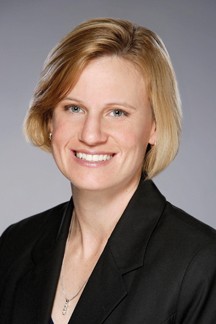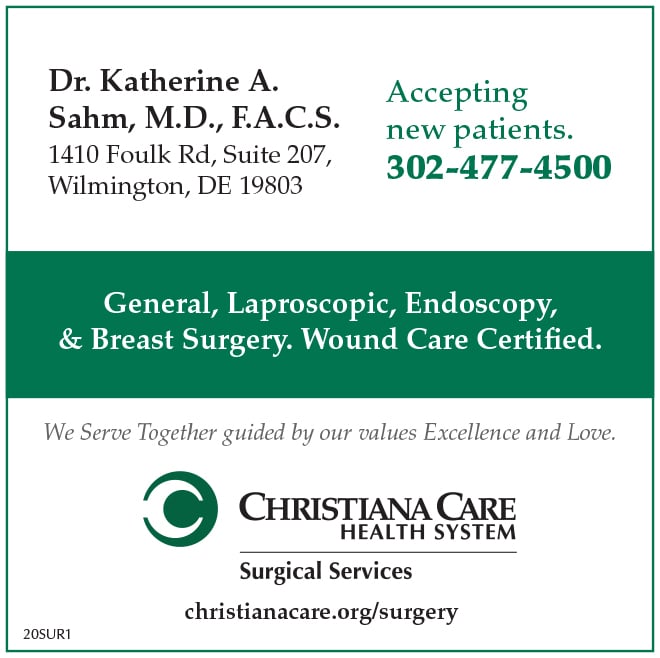Do I Have A Hernia?

By Dr. Katherine A. Sahm, M.D., F.A.C.S.
There are seams in the abdominal wall and if these seams pull apart the bulges can slide into an area where it does not belong. These contents are normally portions of intestine or abdominal fatty tissue. The abdomen has many muscles to keep things like the stomach, small intestine, and colon where they belong, but if something starts to slip through a weak part, it creates a hernia.
When a hernia bulges out of the opening that it comes through, it can put pressure on the blood vessels in the hernia and constrict the blood supply. This could cut off the blood supply. If the blood supply is cut off at the opening of the abdominal wall it becomes a medical and surgical emergency. The tissue needs oxygen, which is transported in the blood supply and if the blood supply is cut off the tissue will die.
Causes & Risk Factors
Any condition that increases the pressure of the abdominal cavity may contribute to the formation or worsening of a hernia. Some examples include:
- Obesity
- Heavy lifting
- Coughing
- Straining either during a bowel movement or urination
- Increase fluid in the abdominal cavity
- Chronic lung disease
- A family history of hernias can make you more likely to develop a hernia.
Types Of Hernias Include
- Hiatal
- Incisional
- Inguinal
- Umbilical
- Ventral
- There are several others; however, the above-mentioned hernias are not as common.
Hiatal Hernia
Occurs when part of your stomach pushes upward through your diaphragm. The diaphragm normally has a small opening for the esophagus. This opening can become the place where part of the stomach pushes through. Hiatal hernias can be asymptomatic. Larger hiatal hernias can cause pain and heartburn.
Incisional Hernia
Abdominal surgery causes the abdominal wall to be flawed. This flaw can create an area of weakness and a hernia may develop through the area. This is a known risk of such surgery. Even after surgical repair, incisional hernias may return.
Umbilical Hernia
This type of hernia accounts for between 10% – 30% of what is typically seen. These hernias are most often noted in a child at birth as a protrusion at the belly button. It is caused when there is an open area in the child’s abdominal wall, which normally closes prior to birth. Umbilical hernias can also appear later in life because this spot may remain a weaker place in the abdominal wall, or in women who are pregnant or have given birth, due to added stress on the area. This type of hernia usually does not cause abdominal pain.
Treatment includes
An attempt to reduce the hernia or push it back in place will generally be made. This occurs after giving medications for pain and possibly muscle relaxers.
Reducible Hernia
The hernia may be reduced or pushed back into the abdomen unless it is very large.
Irreducible Hernia
A hernia may be at times painful and enlarged. It may have also once been a reducible hernia, that cannot be returned into the abdominal cavity. If unsuccessful in getting it back into place the hernia becomes an irreducible hernia.
Strangulated Hernia
Occurs when an irreducible hernia in which the entrapped intestine has cut off the blood supply.
Pain is present as well as tenderness and sometimes there are symptoms of bowel obstruction such as nausea and vomiting
The person may appear ill and not have a fever
This condition is a surgical emergency
An acutely irreducible hernia needs emergency treatment because of the risk of strangulation to the tissue. This requires surgery.
Some untreated hernias will not go away in the absence of treatment. It may feel good for long periods of time and some are easily pushed back in place or reducible. It generally is not an immediate danger to your health but it can be painful. If you have reached a point where you are experiencing increased pain or symptoms you need to see a physician and possibly a general surgeon.
A hernia by itself may not cause symptoms or may cause just slight pain; however it can also cause severe pain. The pain can occur while sitting, standing, walking or running. If you are experiencing pain or the pain has increased over time or the hernia has become non-retractable, you should consult your physician. Further testing may need to be done or you may need to be referred to a specialist/general surgeon.
Bio
Dr. Sahm is experienced in treating patients with various hernias. If you wish to be checked for what you believe may be a hernia or something that was diagnosed as a hernia, please call 302-475-4900 or visit christianacare.org/surgery. Her office is located at 1401 Foulk Road, Suite 207 in Foulk Stone Plaza in Wilmington, DE.


